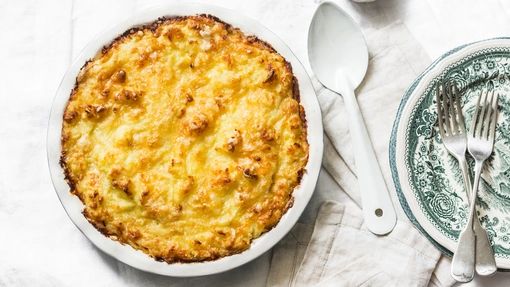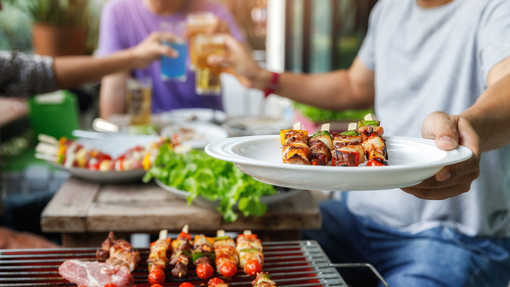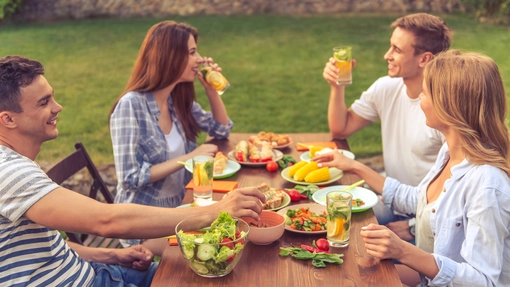We can buy many different types of fish such as salmon, cod and tinned tuna in the UK, which can be cooked and used in a wide range of meals. Different ways to cook fish include grilling, steaming and baking and it can also be used in recipes such as fish pie to use up leftovers. The NHS recommends including two portions of fish in our diets, including one oily fish.
How to store
How to store fresh fish
All raw fish should be wrapped tightly or stored in an airtight container away from cooked foods and at the bottom of the fridge to stop it touching or dripping onto other items.
Freezing fish
Raw and cooked fish can be frozen. It's best to eat frozen food within 3 - 6 months.
Storing cooked fish
Store in airtight container in the fridge for 2 days, freezer for 3 - 6 months.
Fish top tips
How to freeze and defrost
To freeze: Make sure fish is sealed in a container before freezing. Check the packaging of fresh fish before freezing as some fish cannot be frozen.
To defrost: When you take food/ drink out of the freezer, it’s important to defrost it safely. Don’t defrost at room temperature. Ideally, defrost fully in the fridge and use within 24 hours. Or, use a microwave on the defrost setting directly before cooking/ reheating. Always check the on-pack guidance for frozen foods.
Eating the whole food
Some recipes make use of fish skin, which goes crispy when cooked. Use fish heads and bones to make stock.
Be fabulous with leftovers
Leftover fresh fish
Fish should be cooked, eaten or frozen right up to the use-by date. Some fish cannot be re-frozen - check the packaging. After the use-by date, the food is unsafe to eat, even if it has been stored correctly and looks and smells fine. Once raw fish has been defrosted, cook within 24 hours. Once cooked this will last for a couple of days in the fridge or it can be frozen again. Defrost and eat within 24 hours. Always make sure to check the on-pack instructions after purchasing.
Leftover cooked fish
Leftover cooked fish can be flaked and added to scrambled eggs, tossed into rice dishes or made into a pâté by adding mayonnaise or leftover cream cheese.
When buying tinned fish never store in open cans in the fridge, as the metal of the can may transfer to the contents. Put it into a sealable container instead and place in the fridge to use up in meals such as salads and sandwiches.
Buying tips
Buy the right pack size for your needs. Think about whether you’ll get through the whole pack before the Use By date and how long you have to use the food once the pack has been opened. If you’re not going to eat it all in time, freeze some for later. Some fish cannot be re-frozen - check the packaging.
Think about swapping fresh fish for frozen or a frozen fish pie mix. Frozen foods last a long time in the freezer, you can use as much as you need when you need to and they can often be a cheaper option.
Consider going to your local fishmonger to reduce your food footprint (impact on our planet).
Perfect portions
Use our portion calculator for a quick and simple way to check how much of this food to serve at mealtimes.
Valuing your Fish beyond the price tag
Goodness in food
Your food is more than its shape, colour and price. Your food has an important role to play to help keep you healthy and with enough energy to live your life how you wish to.
- Oily fish is a good source of vitamin D which regulates the amount of calcium and phosphate in the body. These nutrients are needed to keep bones, teeth and muscles healthy.
- White fish are low in fat, making them one of the healthier, low-fat alternatives to red or processed meat which tends to be higher in saturated fat.
- Oily and some white fish contain omega-3 fatty acids which may help to prevent heart disease.
Food story
By the time your food arrives in your home, it’s already been on quite a journey starting with how it’s made or grown and how your food reaches the supermarket.
So please help our food to finish its story in the most sustainable way, ensuring the planet’s resources that’s already used are put to good use. Take care of your food when it’s in your home and ensure every edible morsel is eaten - and that your food doesn’t end up in the bin!
Why not try these delicious recipes to use up Fish
This recipe uses up all those half eaten jars of pesto and dressings from the fridge and cupboards. As with all these recipes they can be played with, altered and refined depending on the ingredients you have at hand.
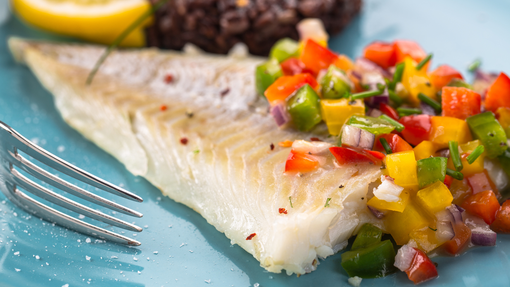
This recipe is an inspired way of using up leftover mashed potatoes and using homemade breadcrumbs.
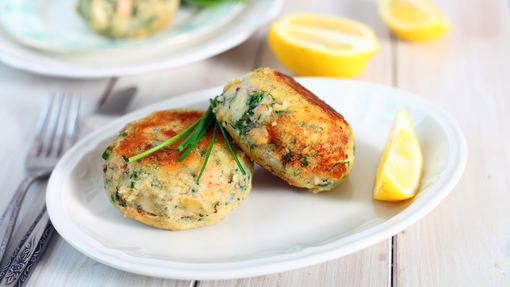
You’ve got to try this dish! It’s so easy to make, so tasty and smells amazing! The turmeric and saffron mash not only looks and tastes great but is ideal to use up potatoes. Frozen products like fish fillets and spinach used here are a really useful way to reduce waste as you only take what you need.
